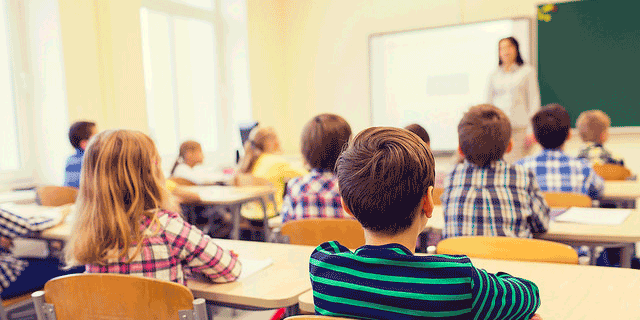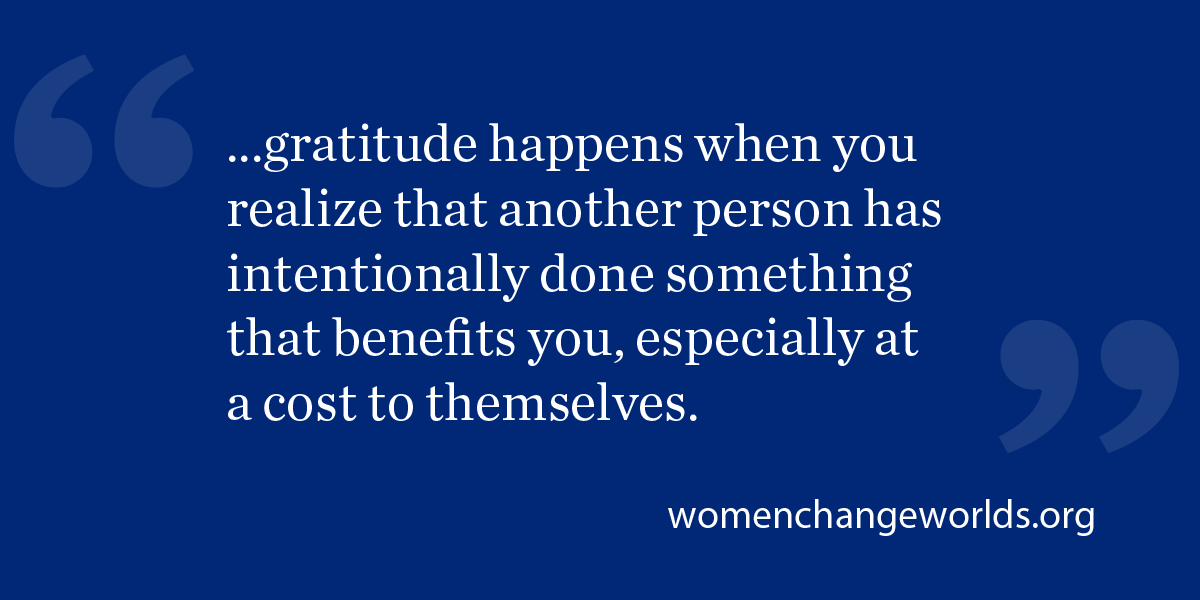This article originally appeared in Greater Good, the online magazine of the Greater Good Science Center at UC Berkeley.
 It’s one thing to teach kids to say “thank you” when they receive a gift or when someone does a favor for them. But how can we help children understand what gratitude really means, in ways that will make them more likely to feel it deeply, express it authentically, and reap its many benefits?
It’s one thing to teach kids to say “thank you” when they receive a gift or when someone does a favor for them. But how can we help children understand what gratitude really means, in ways that will make them more likely to feel it deeply, express it authentically, and reap its many benefits?
One way to increase kids’ gratitude is to guide them to not only acknowledge that someone else did something for them, but to also consider why the person did it, what the cost to the person was, and what benefits they have received from it. The idea is that gratitude happens when you realize that another person has intentionally done something that benefits you, especially at a cost to themselves.
This thinking process, which researchers refer to as “benefit appraisal,” highlights the interpersonal nature of gratitude and may help strengthen our relationships. In one study, elementary schoolers who were taught benefit appraisal reported more positive emotions and showed more grateful attitudes and behaviors than other students, both immediately and months later.
 In partnership with the Greater Good Science Center and the John Templeton Foundation, Open Circle, an evidence-based social-emotional learning program for students in grades K-5, has added a new component based on the science of gratitude—including benefit appraisal. In addition to incorporating gratitude into their professional development workshops for educators, they developed gratitude lessons and practices for their classroom curriculum for grades 4-5.
In partnership with the Greater Good Science Center and the John Templeton Foundation, Open Circle, an evidence-based social-emotional learning program for students in grades K-5, has added a new component based on the science of gratitude—including benefit appraisal. In addition to incorporating gratitude into their professional development workshops for educators, they developed gratitude lessons and practices for their classroom curriculum for grades 4-5.
The pilot group of teachers who have tried the gratitude curriculum have responded very positively, reporting benefits for themselves and their students such as strengthened classroom relationships and community, higher levels of positive emotions, and more generous and compassionate action.
We are grateful to Open Circle for allowing us to share three sample activities for helping students deepen their understanding and practice of gratitude—along with insights from some of the teachers who have used them.
Emily Campbell is the research assistant for the Greater Good Science Center’s education program and a Ph.D. student in education at UC Berkeley.
When you subscribe to the blog, we will send you an e-mail when there are new updates on the site so you wouldn't miss them.
Comments